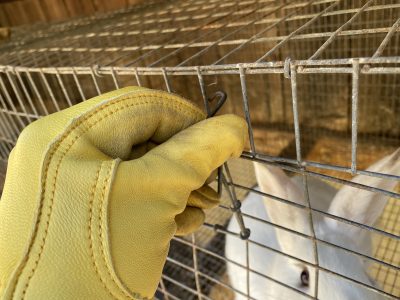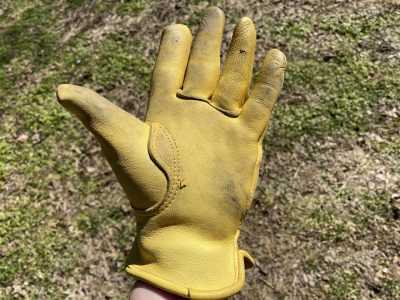Deerskin Gloves Are All-Around Gloves for Your Kit
Josh Centers 02.14.22

If you spend much time outdoors, you need gloves to protect your hands from cuts and splinters and keep them warm in the winter. It’s tempting to go barehanded and shrug off your discomfort with machismo, but experience will teach you that a good pair of gloves will save you a lot of unnecessary pain and injury.
No glove does every job perfectly. Thick, insulated gloves keep your hands warm, but the heavy padding makes objects hard to grasp and manipulate. Thin shooting gloves allow dexterity, but your hands will freeze if you spend much time outdoors. Both are good to keep in your glove drawer, but for your go-to glove you want a happy medium.
There are all sorts of high-tech gloves made of the latest and greatest materials, but my go-to is all-natural deerskin gloves, which can be obtained for about $20 at any farm or hardware store. The outside is soft and supple, they’re thick enough to keep your hands warm for short periods even in 17°F cold, they’re water-resistant enough for a snowball fight with the kids, and if you get a good fit they offer all this protection with a minimum of bulk.
You can buy them online, but I recommend trying them on in person. You want a nice, snug fit, but not so tight that your hand is constricted. But you also don’t want empty space at the ends of the fingers, which makes it hard to grasp small objects. That might mean buying a size smaller than you’d expect. That’s okay, no one has to know you’re wearing small gloves.
Leather gloves come from a lot of different animals. The ones you’ll see most often are cowhide and pigskin. Cowhide gloves are a bit less expensive but stiffer. Pigskin is even cheaper and stiffer. They have their place, but for my purposes, I prefer the flexibility of deerskin. You can even buy gloves made of more-exotic leathers like buffalo, though I haven’t tried any.
Another thing I like about deerskin gloves is that they’re made from natural materials. They’re sustainable, since there is no shortage of deer, and there are fewer concerns about endocrine-disrupting chemicals that so many plastics give off, which can wreak havoc with your hormones and reduce your testosterone. They’re also breathable so your hands won’t be a sweaty mess when you take them off.
Deerskin gloves are my go-to whenever I have to take care of something outdoors. They’re flexible enough that I can cram them into the small side pocket of my Carhartt jacket or a back pocket. I put them on when I go out in the morning and I have no trouble opening rabbit cages, picking up rabbits, and collecting eggs. And on the rare occasion when a chicken flies out of its fence, my deerskin gloves are the first thing I grab.

You can also wear deerskin gloves for shooting. My gloved finger easily slips into the trigger guard and I can manipulate all of the necessary functions. However, they’re a bit thicker than you’d probably want in a shooting glove and you may fumble with pistol and rifle cartridges and shell casings. I wouldn’t take them to the range, but they’ll do in a pinch.
Caring for deerskin gloves
Unless you keep them in the glovebox, the bright yellow deerskin quickly looks dirty. And over time, the thin upper layer of skin starts flaking off. These gloves won’t last forever, especially if you put them to good use, but there are a few things to extend their life.

The first thing to know is if they get wet, let them dry in a cool, dry place. Like any other leather, drying the gloves with heat will dry out the leather and possibly shrink the gloves.
If you get a big mess on your glove, like egg yolk from a broken egg, you can simply rinse it off with water and set the glove aside to dry. For caked-in dirt and grime, Northstar Fur & Trading recommends mixing cool water and Woolite in a small bowl, soaking a cloth in the mixture, and gently rubbing the dirt and stains. When you’re done, carefully squeeze out the water and set the glove aside to air dry. They also suggest machine washing on the delicate cycle, but I wouldn’t want to expose the leather to that much water or agitation.
For additional waterproofing, there is some debate. Many people swear by Obenauf’s leather oil, while others have reported good results with a 50/50 mix of beeswax and vegetable oil melted in a cooking pot. I’ve also had good results restoring cow leather gloves by applying refined coconut oil (the unrefined stuff will make your gloves smell like coconuts), but haven’t tried it with deerskin yet.
As for me personally, I don’t bother washing my gloves, unless I get something gross on them, and I don’t oil them unless they get especially dry and stiff. By that point, they’re about ready to replace anyway. Work gloves can last a long time if you take care of them, but they’re still ultimately a disposable item.

